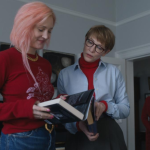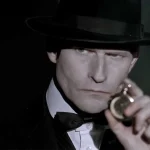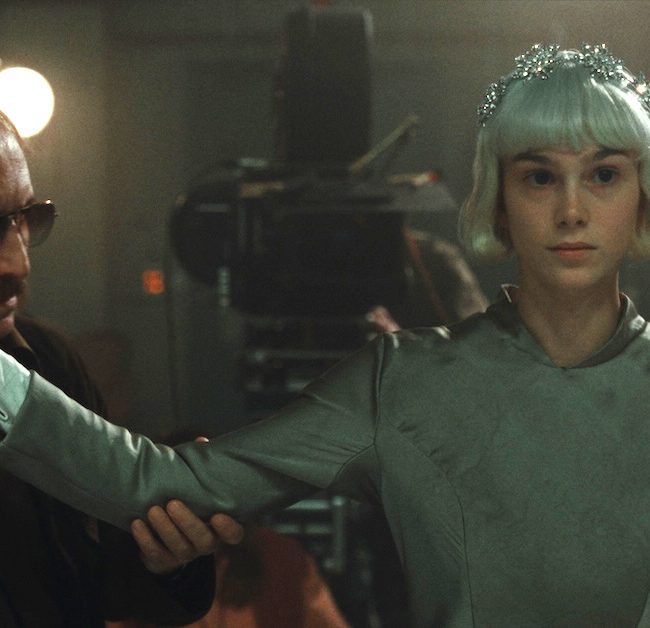A Conversation with Noémie Merlant & Sanda Codreanu (THE BALCONETTES)
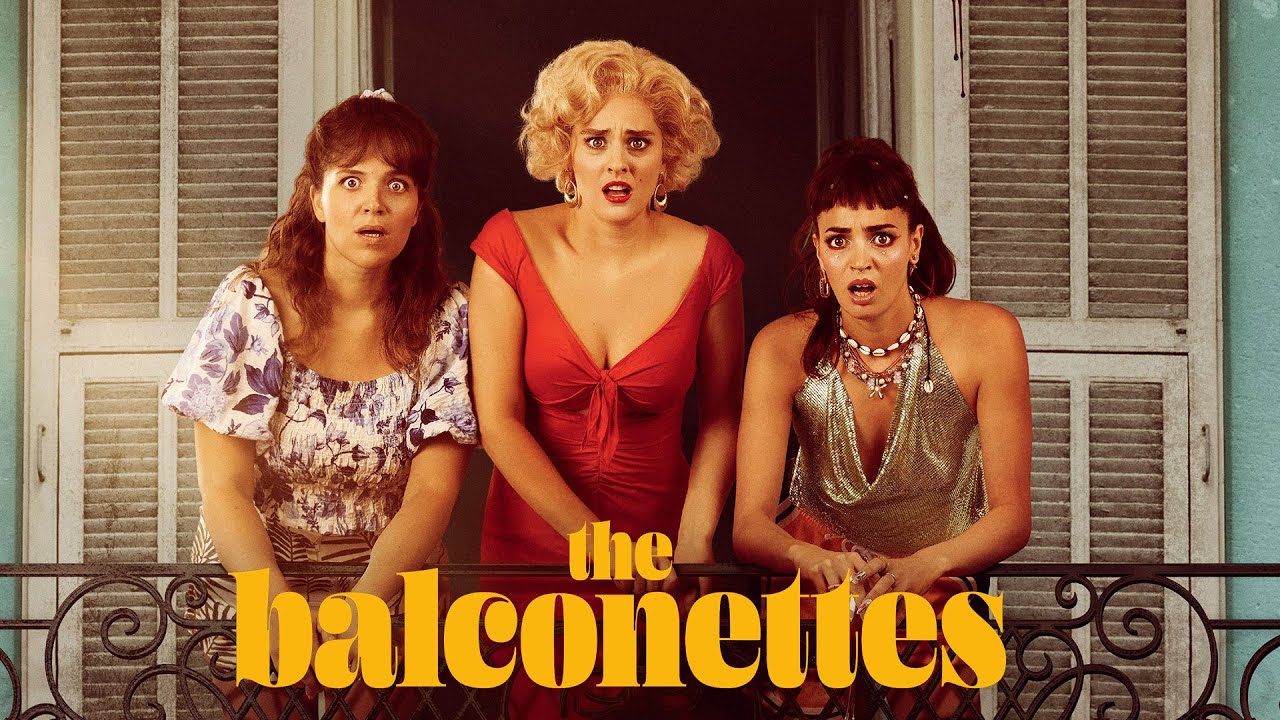
In The Balconettes (which I recently reviewed), French actress/writer/director Noémie Merlant (Mi iubita, mon amour) delivers an exciting sophomore effort behind the camera, crafting a powerful feminist tale about physical and sexual assault and its horrific consequences. Seamlessly working over-the-top comedy into the mix, she uses camera and editing tricks in the best possible way, revving the action into high gear as events spiral out of control. With a very strong ensemble—of which she is a major player—that includes Lucas Bravo, Sanda Codreanu, and Souheila Yacoub, Merlant elevates the various elements of her story into a cohesive whole that proves she is a cinematic force to be reckoned with. Not long ago, I spoke with Merlant and Codreanu via Zoom, and what follows is a transcript of that conversation, edited for length and clarity. Our discussion flowed in both English and French, as I am bilingual. All translations and adjustments for American idioms are my own.
Hammer to Nail: Noémie, I know you wrote this script with other people, including Sanda and Céline Sciamma. In terms of the title, how did you get from “Les femmes au balcon” [“the women on the balcony”] in French to “The Balconettes” in English?
Noémie Merlant: Actually, it was Céline.
Sanda Codreanu: She found the title in English, not in French.
NM: Yes, I came up with “Les femmes au balcon” and she came up with “The Balconettes.” I wanted to translate it directly, but it didn’t quite work. In French, there is a play-on-words because it recalls the expression “Il y a du monde au balcon” [literally, “it’s crowded” or “it’s full” “on the balcony,” which refers to a woman’s large breasts], which it doesn’t do in English. So we were looking for something different, and I don’t know how she thought up “The Balconettes,” but I think it’s a little funnier than “women on the balcony.”
HtN: And a lot of your film is funny, even though it deals with a very serious subject matter. What was your collaboration process like with the other screenwriters?
NM: So, at first I started to write at Sanda’s home. We were living together at her place. And since it’s a part of our story, this movie, Sanda helped me a lot with the first drafts. And I’ve been good friends with Céline for years and she knew about this project and was excited about it, and when she saw that I was struggling, she said, “You know, sorority is also for this kind of thing. I’m a screenwriter. I’m here for you if you need help.” So it was, I think, after … two years?
SC: Yes, two years after we started.
NM: After two years of writing, I had a draft, and then Céline started collaborating and we worked together for about six months or a year. And it was very funny.
SC: She gave a lot of confidence to Noémie.
HtN: But it was just the two of you, at first.
NM/SC: Yes.
HtN: So, Sanda, what was the writing process like, from your perspective?
SC: It was very natural, because we’ve been friends for a while.
NM: For about fifteen years!

A still from THE BALCONETTES
SC: Yes, and we worked together on her first film, Mi iubita, mon amour, and it was very easygoing because we live together in my apartment with my sisters, and we had real neighbors across the way, and it flowed quite naturally from that. We wanted to talk about ourselves and about women.
NM: Women in general and about our trauma, also.
SC: So it was very easy and funny because we lived like the characters.
NM: We live a little bit like in the movie, except that we don’t kill anyone. (laughs)
SC: Yet … (laughs)
NM: When I arrived at Sanda’s place to live with her, the starting point was exactly like that of Elise [the character Merlant plays in the film]. I did not enjoy how I felt at that time in my romantic relationship, so I escaped.
SC: But it’s important to remember that we are creating characters. This is not us: I’m not a writer [like the character she plays in the film] … yet. [laughs) We transformed these characters because it’s a movie.
NM: We wanted to do cinema.
SC: But the departure point was our actual lives.
HtN: I’d like to talk about the cinematography, because the opening shot through the balconies and down the opposing building is a real tour de force, and I wonder how you and cinematographer Evgenia Alexandrova discussed that shot and worked together, in general. I know she also shot your first feature.
NM: Yes, she did, and we have a really good relationship. She is the same age as me. She started as a DP [Director of Photography] when I started as a director, so we share a lot in common. I had written down the actual shots in the script.
SC: And this particular shot was in Noémie’s mind. She always wanted it for the start. It was technically very difficult.
NM: But Evgenia made it possible.
SC: And I think your relationship with Evgenia is amazing. I only recently realized—because time flies and you work on other projects in the meantime—that the freedom we had on Mi iubita, mon amour, which we made without a real production team and budget, came from this meeting of creative artists on set. If you have a good rapport with someone like your actor or DP, you have a real partner and from that comes creativity. And with The Balconettes, we were able to build on the Mi iubita experience.
NM: And sometimes I was lost, but it was a very collaborative movie. She was there when I had to act in the film and I couldn’t think about directing; it happened two or three times. She knows me so well and found solutions, and sometimes Sanda also helped me, directing me as an actress. So, I wrote the script, and Evgenia had all the versions, since she was there from the beginning. She’s one of the “women on the balcony.” We spend a lot of time together. And each time I sent her scripts, I was also sending her photos and drawings that I made to show her what I wanted. And so she knew what I wanted years before the actual shoot began.
I had a notebook with all the footage I wanted. And at the start of the movie, I really wanted to do an homage to Hitchcock’s Rear Window. I really wanted to use the perspective of the photographer as we look at these women, and then little by little we will start looking at them not just in a way that heightens the mystery but that enters into their intimate lives in the apartment. And then it’s not a woman who disappears, as in Rear Window, but a man. And so at the end, we turn around and we see things from their perspective and see a man in his underwear. So that’s my little wink at Hitchcock. I love Rear Window and think it’s one of the greatest films ever made. But here we do things from the female gaze, instead.
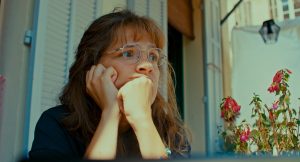
A still from THE BALCONETTES
HtN: I also loved the score, and your composer, Uèle Lamore, does such a great job creating comic music in opposition to what we’re seeing on screen. How did you discuss with her what the score should sound like?
NM: When we were editing the film, we used a lot of temp music, mainly from the shows White Lotus and Squid Games. Why? Because I wanted music that mixed comedy and strangeness, melody, suspense, tension, love. It’s quite hard to find music that has all of these colors, such as what you hear in my movie, which uses a lot of different colors and genres. And then I sent a link to the film to a couple of composers with that temp score, and they had to try to find a way to do something different but with this mix, and Uèle understood right away. She sent something back that is almost exactly what you hear in the finished movie. She captured this sense of craziness. (laughs)
I knew from the beginning that I wanted to have the voice of women in the movie, like a chorus of female voices with sometimes a kind of big male voice, which comes in from time to time. And I’m a big jazz fan, so I knew wanted that, as well. So I asked her for that, too.
HtN: I really like the editing, too, especially your quick transitions between scenes, which are very effective. You worked with Julien Lacheray, who has also worked with Céline Sciamma and also with Alice Winocour, and he does such a great job. What was your process like with him?
NM: He’s amazing. This was the first time we worked together, though I knew him before. He was not scared, which is why I wanted to work with him. He had never done this kind of movie. Actually, not a lot of French people have made this kind of film, because it’s a mix of a lot of genres that we are not used to doing so much in France. Maybe a little more now, with Julia Ducournau, but I think directors in the United States, South Korea, or Spain are more used to this mix of genres. And he is a big fan, as am I, of genre movies and Korean movies, so he was very excited.
At the beginning, it was very hard, because the original cut of the film was over 3 hours, and then we made strong decisions about rhythm, and that’s why there are a lot of cuts like this. We wanted to play with genre cinema and suspense and fun. Because sometimes a cut can be funny or dramatic. In a way, it’s a movie about editing, as well.
The first shot is a classic long-take example of mise-en-scène; in fact, I had it originally as one single take, but we decided to make one cut, which we didn’t plan for at first. We decided to do it because it added a certain rhythm. It’s the moment where the blood splatters on the little statue of Jesus. Normally, the camera would flip back to the actress, but we said, “No. She killed her husband, and that deserves a cut. It’s like the blow he takes to the head; it cuts, and we look at her.”
We had a lot of fun. There are directors—like Céline, for instance, who is amazing—who conceive of their films completely edited in their heads. And I am not yet at that stage. Will I get there one day? I have to admit that writing is not really my cup of tea, but as a result we have a terrific time in the editing. We tried lots of different things. We had just one regret, which was that we weren’t able to use the narrative we created for Denise [the woman in the beginning]. We just didn’t end up with the coverage we needed to tell her story. So that is my one big regret.
HtN: Let’s talk about the cast. I loved you, Sanda, and you, Noémie. Did you always know, the two of you, that you were both going to be in the film? And then how did you find Souheila Yacoub, and then Lucas Bravo, whom I know from the Netflix series Emily in Paris?
SC: We wrote for ourselves. Noémie wrote the part of Nicole knowing that I would play Nicole. There was no question. She wrote with me in her head. Although I am not Nicole in real life.
NM: And she was inspired by our relationship.
SC: Yes. When you know a person, it’s richer.
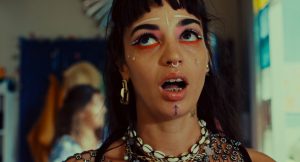
A still from THE BALCONETTES
NM: I like to start with something real. I need that. I’m not sure why. And the real root of the film was our story, our friendship. And I said to myself, “I cannot cheat.” And this film speaks of the trauma that we share and from which we needed to heal. We also wanted to give hope to others, as well as freedom. And so we couldn’t not do it together. It wouldn’t make sense.
SC: This bond was so strong that we needed to find a good Ruby, who was a completely fabricated character. On the one hand, it was pretty easy, because Souheila was so perfect for the part, though we held auditions anyway. She’s such a free and open person, and very generous in her acting. I participated in the audition process, because that three-person interaction was so important for the movie. If this trio didn’t exist, nor could the film.
NM: Beyond the fact that Souheila is an excellent actress and that she was right away perfectly at ease with us, she was also one of those rare actresses who completely consents to this kind of role. Like me, she has no concerns about displaying her body, going topless, and so I knew that I was not going to cast someone who would feel uneasy about what she was asked to do. That was very important to me.
SC: So important for this particular role.
HtN: She reminds me of Béatrice Dalle (gesturing to poster of movie Betty Blue in my office).
NM: Absolutely!
SC: And for Lucas, it was complicated. I participated in all those auditions, too, because we had to establish the relationship between Nicole and the ghost, and we saw a lot of guys, and it wasn’t at all clear if they could play the part. None of them were particularly happy with it. They were all there saying, “Ahhh, he’s awful.”
NM: They didn’t want to play a rapist. (laughs)
SC: And Lucas showed up with a very Zen-like energy, very calm and content.
NM: Happy to play something so different than what he normally does, such as in Emily in Paris.
SC: And with an almost feminine energy, actually. And very open to us, very curious. Not at all defensive.
HtN: Well, it all comes together quite nicely. Thanks so much for chatting with me!
NM/SC: Thank you!
– Christopher Llewellyn Reed (@ChrisReedFilm)

